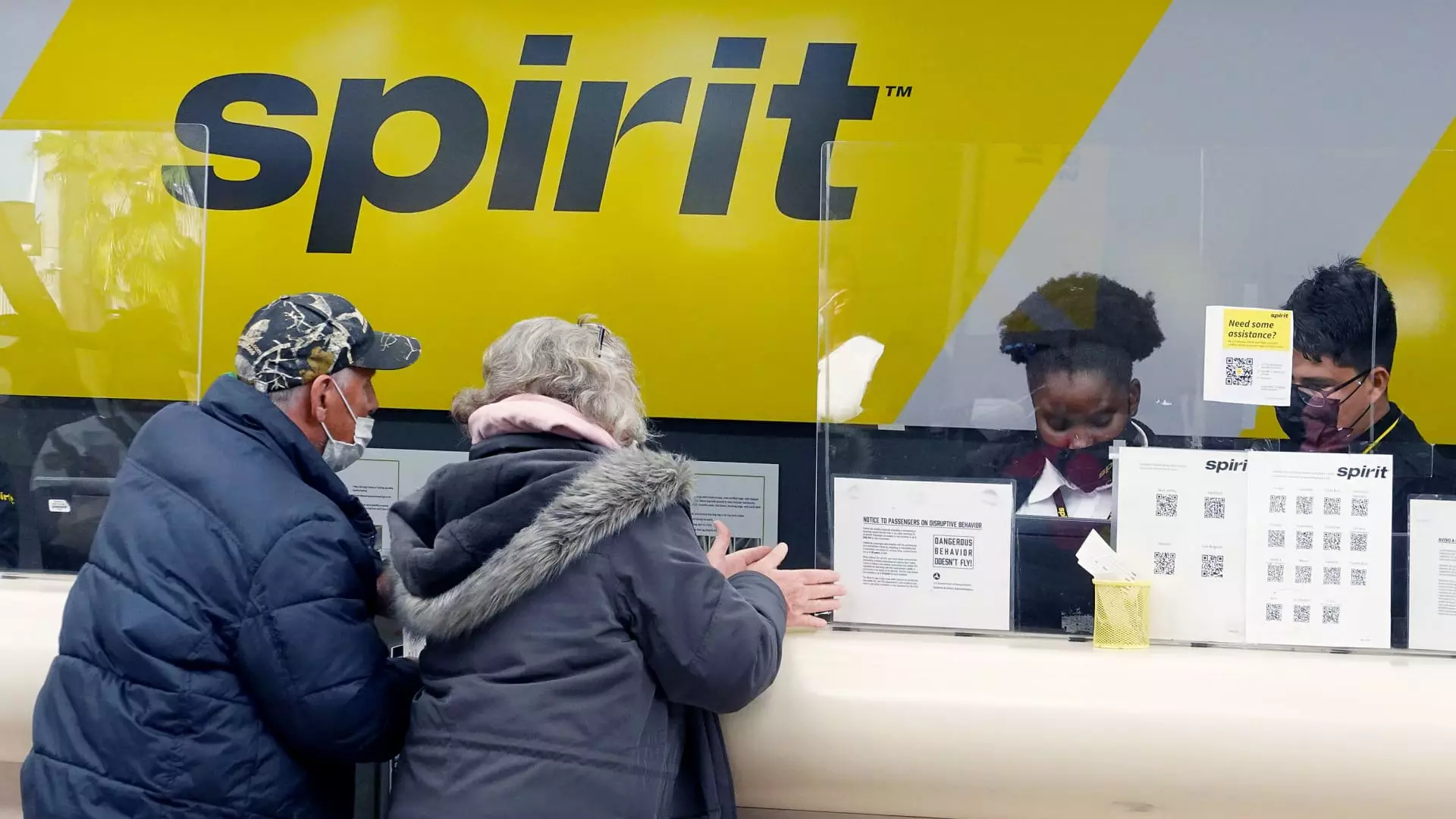Spirit Airlines, once hailed as a disruptor in the realm of budget air travel, now finds itself in the throes of bankruptcy protection after enduring years of financial struggle, unsuccessful merger attempts, and ever-evolving consumer expectations. This situation serves as a cautionary tale for both industry stakeholders and travelers alike. On the surface, Spirit’s legacy is one of affordability and accessibility; however, the underlying issues reveal a fragility that ultimately led to its current predicament.
Bankruptcy Filing: A Hard Reality
On a recent Monday, Spirit Airlines announced its filing for Chapter 11 bankruptcy protection in U.S. Bankruptcy Court for the Southern District of New York. In tandem with this filing, the airline revealed a carefully structured agreement with its bondholders, securing $300 million in debtor-in-possession financing aimed at navigating through these tumultuous waters. Spirit has expressed confidence that it will be able to exit bankruptcy by the first quarter of the following year. Nevertheless, the road ahead appears riddled with challenges, particularly as it strives to sustain operations and retain customer trust amidst a crisis that has left many skeptical of its viability.
The company has reassured its customers that their travel plans remain intact and can proceed as scheduled, a critical aspect in maintaining consumer loyalty during a shaky period for the airline. CEO Ted Christie has stated that passengers will be able to access their tickets, credits, and loyalty points as usual. However, the optimism feels somewhat disingenuous, considering the profound struggles the airline has endured, including a notable decline in stock value – down more than 90% this year.
The financial crisis facing Spirit has roots that extend back beyond the recent pandemic. The airline has grappled with a significant engine recall that led to grounded flights, rising operational costs, and a failed merger attempt with JetBlue Airways. The acquisition was thwarted by federal anti-trust rulings, reflecting broader industry concerns about market competition. These setbacks have compounded Spirit’s difficulties, stunting any potential recovery paths and signaling to industry analysts that the company’s trajectory is more downward than upward.
In this financially charged environment, Spirit has had to grapple with a ballooning debt load, notably a $1.1 billion obligation to its credit card processor, and recent attempts to negotiate terms have ultimately proved insufficient. The company’s strategy of selling off assets, such as a fleet of 23 Airbus aircraft for around $519 million, has yielded some short-term cash relief but highlights the systemic issues at play.
Spirit Airlines pioneered the ultra-low-cost carrier model that other airlines have since emulated, making cheap fares a staple of air travel in America. However, the airline’s past success has turned into a fleeting memory, particularly post-pandemic when operational costs surged, and consumer preferences shifted towards a more comfortable flying experience. Increased competition from legacy airlines, which have introduced their own basic economy fares, has further eroded Spirit’s market share.
On the one hand, the availability of lower fares has served the price-sensitive traveler. On the other hand, travelers have begun to prioritize comfort and reliability, showing a willingness to pay more for enhanced services and amenities. Spirit’s recent attempts to introduce bundled fares and a first-class-like experience reveal an urgent need to adapt to this changing landscape.
The Future: A Road to Recovery?
As Spirit Airlines navigates through its bankruptcy, industry experts theorize that the carrier may need to undergo significant retrenchment. This could involve further route reductions and workforce cuts, totaling an expected furlough of approximately 330 pilots in January, in addition to previous layoffs. While these measures may offer short-term cost relief, they do pose risks to the airline’s long-term competitive positioning.
Negotiations with Frontier Airlines for a possible merger could yield a new strategy aligned with the evolving market landscape. Nonetheless, achieving a successful partnership will require a recalibration of Spirit’s operational and strategic philosophies to ensure the airline does not find itself in a similar predicament in the future.
The story of Spirit Airlines serves as a pivotal reminder of the volatility inherent in the airline industry, particularly for budget carriers. A once-prominent disruptor must now grapple with its identity in an ever-changing market, facing both internal and external hurdles that have led it to bankruptcy. As it embarks on a challenging path toward recovery, the outcome remains uncertain, leaving stakeholders, employees, and customers to wonder: can Spirit reinvent itself, or is it destined to become just another cautionary tale?


Leave a Reply